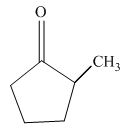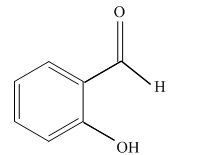
(a)
Interpretation:
Write a structural formula for the principal organic product formed by treating with following compound with

Concept Introduction:
Reduction is the process of addition of hydrogen to the compound.
(b)
Interpretation:
Write a structural formula for the principal organic product formed by treating with following compound with

Concept Introduction:
Reduction is the process of addition of hydrogen to the compound.
(c)
Interpretation:
Write a structural formula for the principal organic product formed by treating with following compound with

Concept Introduction:
Reduction is the process of addition of hydrogen to the compound.
(d)
Interpretation:
Write a structural formula for the principal organic product formed by treating with following compound with

Concept Introduction:
Reduction is the process of addition of hydrogen to the compound.
Trending nowThis is a popular solution!

Chapter 16 Solutions
Introduction to General, Organic and Biochemistry
- Fill-in-the molecules for the oxidation or reduction of the starting alcohol.arrow_forwardName the following carbohydrates give both the systematic and common names. Don't forget to identify the Isomer.arrow_forwardWhat is the product of the reaction of XeF4 with H2O? Group of answer choices H2XeF2 H2XeF4 XeO3 H2XeOarrow_forward
 Introduction to General, Organic and BiochemistryChemistryISBN:9781285869759Author:Frederick A. Bettelheim, William H. Brown, Mary K. Campbell, Shawn O. Farrell, Omar TorresPublisher:Cengage Learning
Introduction to General, Organic and BiochemistryChemistryISBN:9781285869759Author:Frederick A. Bettelheim, William H. Brown, Mary K. Campbell, Shawn O. Farrell, Omar TorresPublisher:Cengage Learning
 Organic ChemistryChemistryISBN:9781305580350Author:William H. Brown, Brent L. Iverson, Eric Anslyn, Christopher S. FootePublisher:Cengage Learning
Organic ChemistryChemistryISBN:9781305580350Author:William H. Brown, Brent L. Iverson, Eric Anslyn, Christopher S. FootePublisher:Cengage Learning


